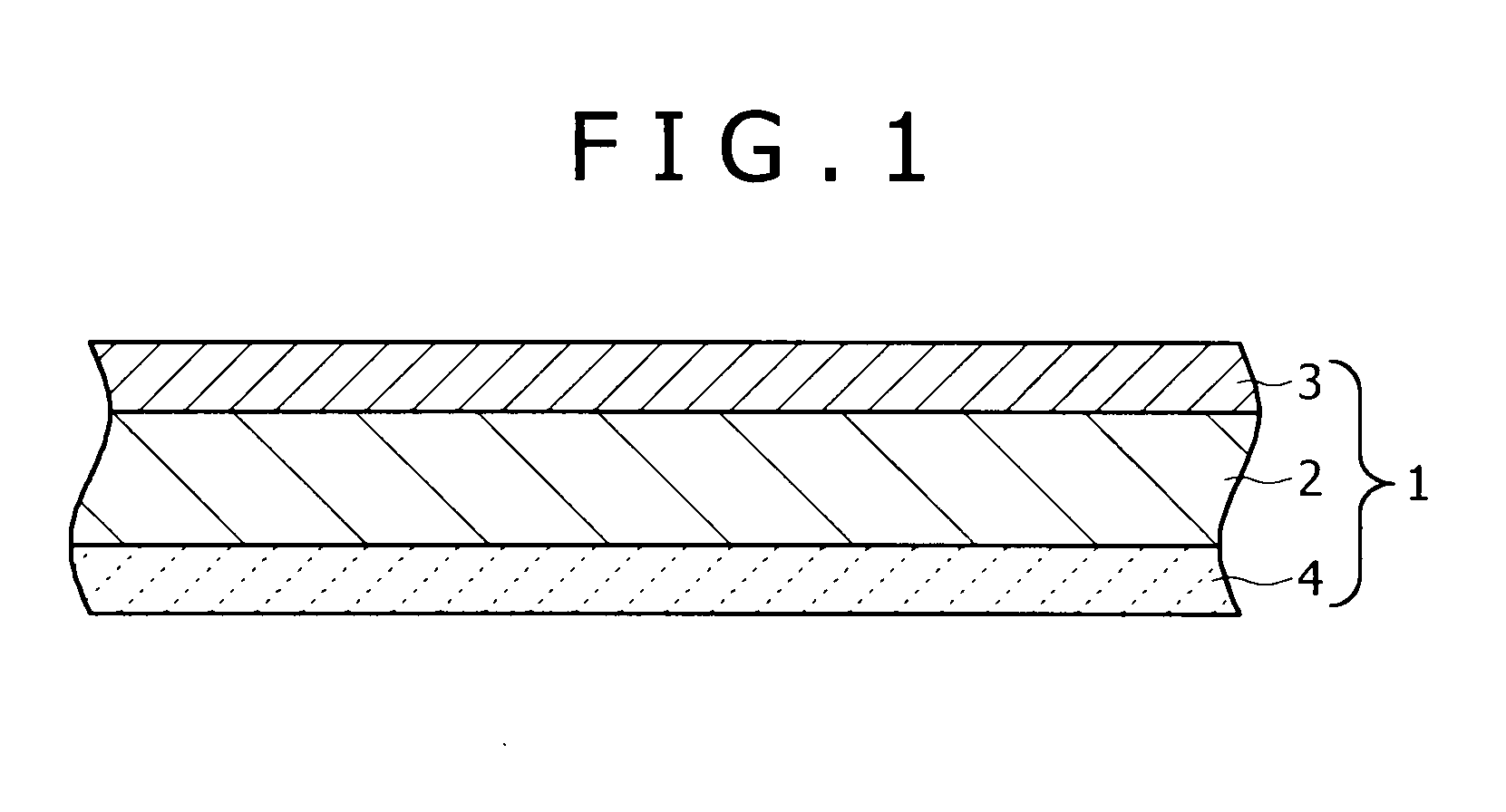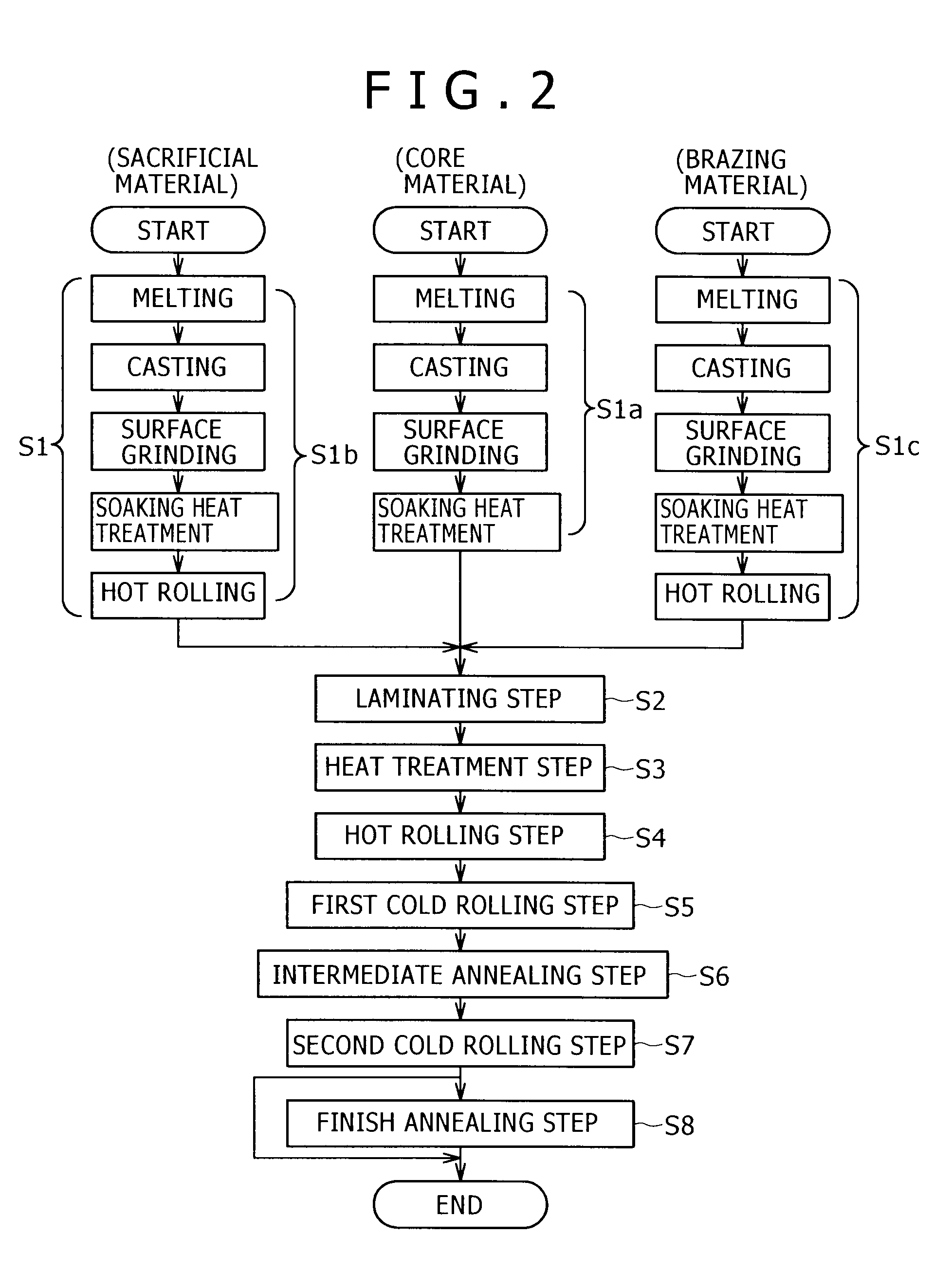Aluminum alloy clad sheet for a heat exchanger and its production method
a technology of aluminum alloy and clad sheet, which is applied in the direction of manufacturing tools, solvents, transportation and packaging, etc., can solve the problems of loss of post-brazing strength, difficulty in use, and loss of fatigue life, etc., to improve elongation and formability, excellent fatigue life, and excellent fatigue life. , the effect of improving the elongation and formability
- Summary
- Abstract
- Description
- Claims
- Application Information
AI Technical Summary
Benefits of technology
Problems solved by technology
Method used
Image
Examples
examples
[0075]Next, the aluminum alloy clad sheet for a heat exchanger of the present invention is described in further detail by comparing the Examples within the scope of the present invention and Comparative Examples outside the scope of the present invention.
[0076]First, the aluminum alloy for the core layer, the aluminum alloy for the sacrificial layer, and the aluminum alloy for the filler layer are respectively melted and casted by continuous casting. With regard to the core layer (the member for the core layer), surface grinding (surface smoothing treatment) and soaking heat treatment were conducted to produce an ingot for the core layer (the member for the core layer) having the predetermined thickness. With regard to the sacrificial layer (the member for the sacrificial layer) and the filler layer (the member for the filler layer), surface grinding (surface smoothing treatment) and soaking heat treatment were conducted to produce an ingot for the core layer and an ingot for the sa...
PUM
| Property | Measurement | Unit |
|---|---|---|
| Grain size | aaaaa | aaaaa |
| Grain size | aaaaa | aaaaa |
| Temperature | aaaaa | aaaaa |
Abstract
Description
Claims
Application Information
 Login to View More
Login to View More - R&D
- Intellectual Property
- Life Sciences
- Materials
- Tech Scout
- Unparalleled Data Quality
- Higher Quality Content
- 60% Fewer Hallucinations
Browse by: Latest US Patents, China's latest patents, Technical Efficacy Thesaurus, Application Domain, Technology Topic, Popular Technical Reports.
© 2025 PatSnap. All rights reserved.Legal|Privacy policy|Modern Slavery Act Transparency Statement|Sitemap|About US| Contact US: help@patsnap.com



